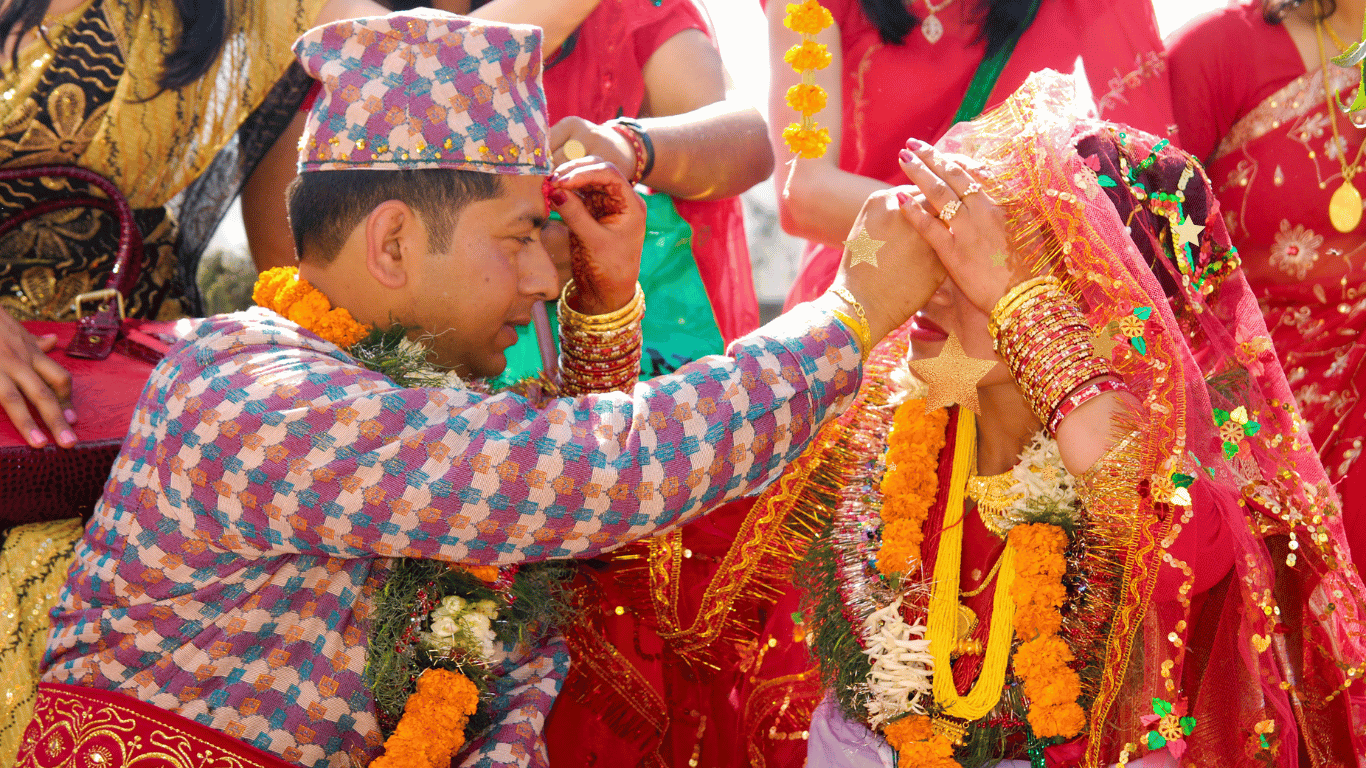Table of Contents
People actively consider marriage an important social event in Morocco. People actively celebrate Moroccan weddings, recognizing them as elaborate and bright festivals. At the same time, There are many types of marriages. However, there are two main kinds of Morocco marriages.
1. polite marriages
2. religious marriages.
Respectful relationships are led by grown-ups, and the Moroccan government legally recognizes these unions.
To go into a pleasant marriage, the two life partners should be of legitimate age and not be firmly related. The interaction includes getting the accompanying reports:
- Work recognition
- Distinguishing proof
- Clinical testaments
- Confirmation of intimate status
Endorsement from the Wali, the male gatekeeper, and also for minors
Muslim spiritual leaders actively commit religious marriages. The Moroccan nation does not legally recognize them, but numerous Moroccans always regard them as valid.
History
Morocco, renowned for its fertile land, stands out as a country where cultural richness takes center stage, notably in its weddings. These elaborate affairs, spanning several days, showcase unique customs and benefits. From the henna night to the wedding feast, every aspect of a Morocco marriage carries special significance and adheres to time-honored practices.
Beyond being a union of two individuals, Moroccan weddings transcend into celebrations that embrace family and community. The wedding ceremony also becomes a pivotal event, bringing families and friends together to celebrate the newlyweds and express their approval. The intricate ceremonies, traditional attire, and delectable cuisine seamlessly intertwine, culminating in an extraordinary experience during Moroccan weddings. In this article, we will delve into the various traditions and customs associated with Moroccan weddings, embarking on a three-day journey from Marrakech to Merzouga.
Morocco Marriage Customs
The celebration of marriages has many take-ups due to the type of practices. Depending on the area. However, it is necessary to maintain a precise focus and actively respect the stages of the traditions so that the newlyweds can establish a new home, serving as a fine omen.
Tradition also dictates that the spouse’s home asks for the bride’s writing in the wedding to the girl’s home, and then the two homes begin to discuss the part of the bride’s dowry, the date, and the cost of the traditions. During the meeting, the bridegroom proposes his bridegroom jewelry and great clothes. Further, the amount of the dowry celebrates the end of the meeting and is the Wedding Festivities.
It is also customary for the lady to wear up to seven distinct outfits, addressing the seven locales of Morocco.
- Green and gold caftan for the henna function
- White Takeshita, which represents virtue
- Fassiya of Fez
- Morocco Sahara
- Russia, Berber outfit from Souss
The Meaning of Henna Night
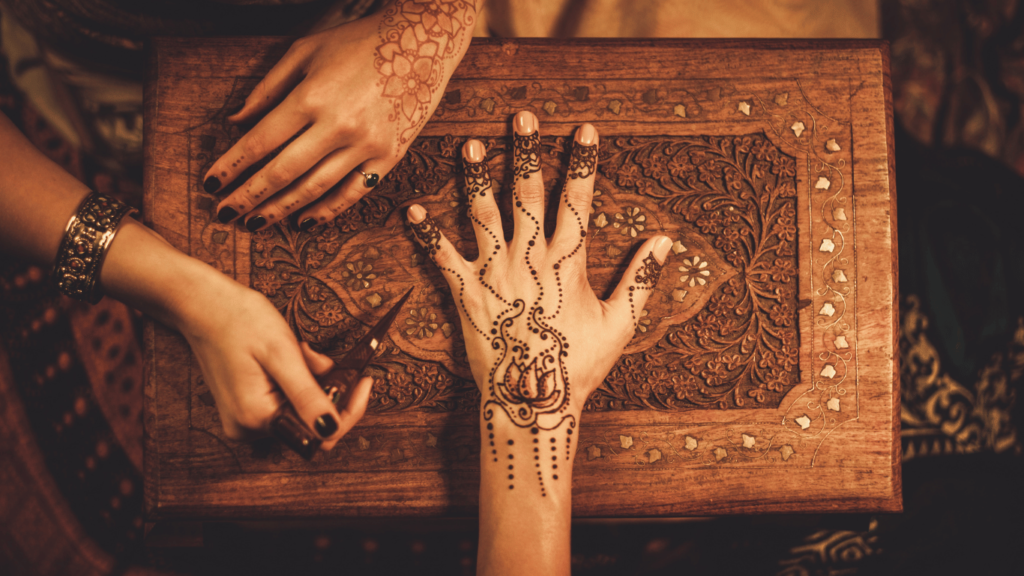
Any Moroccan wedding must include attending the henna evening, a special ceremony where the bride’s hands and feet receive elaborate henna decorations. The consequence of this event lies in the traditions and ideas enveloping it. Many believe that henna brings good fortune and shields the bride from evil energies. Additionally, they assert that the deeper the color of the henna on the bride’s skin, the more her bridegroom will love her.
The henna night brings together the bride’s female partners and friends for an exclusive women-only event, marking a joyous celebration of her upcoming wedding. During this event, the bride typically dons a classic kaftan and is seated in a particular position while the henna artist adorns her hands and feet with intricate designs. Although, The occasion is complemented by custom food. Overall, the henna evening is a lovely and expressive tradition that significantly contributes to the richness of Morocco weddings.
The Conventional Clothing Worn by the Lady and her Bridesmaids
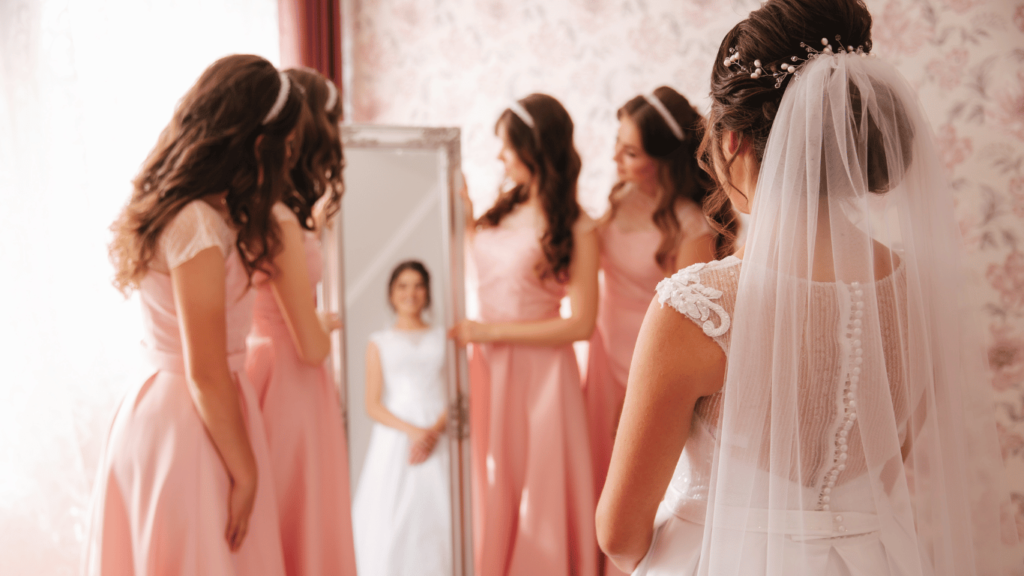
Prepare to be surprised by the lovely formal dress that the bride and her bridesmaids wear on their special day. Crafting the kaftan from silk or velvet is a common practice, with the color choice usually being white or a colorful, bold hue. The dress is fashioned to be figure-hugging, featuring a spread skirt that highlights the bride’s angles. Styling the bride’s hair in a traditional updo, she adorns herself with jewelry, including chain earrings and bracelets.
Additionally, the bridesmaids also wear Kaftans. However, their dresses are generally less resplendent than the bride’s. The shade of the bridesmaid’s dresses is typically chosen to complement the bride’s dress, and they often wear matching adornments. Their hair is also styled in a fix, and they might wear a veil or a headpiece. The conventional clothing worn by the lady of the hour and her bridesmaids is a wonderful portrayal of Moroccan culture, and it adds to the overall magnificence and class of the wedding days.
The Significance of Family and Community in Morocco Marriage
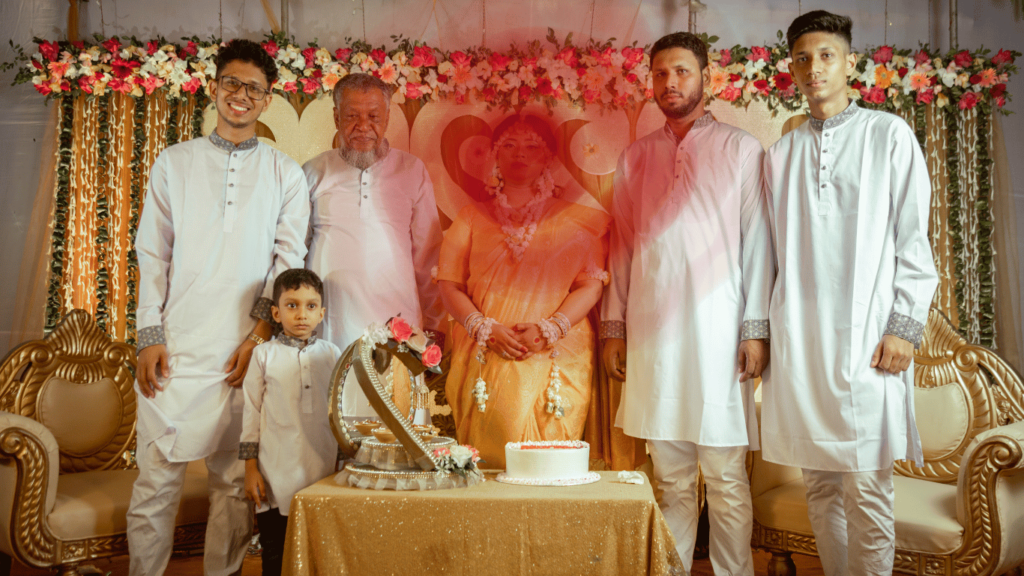
As a visitor, it is easy to touch the powerful sense of home and residents that suffuses every part of these joyous festivals. In Morocco, weddings, family, and residents are at the heart of the festivities. From the initial engagement ceremony to the final send-off, the entire process is a celebration of the union between two homes.
During the wedding, it’s common to see the couple covered by their loved ones, and the bride and bridegroom families often work together to plan and manage the affairs. Everyone comes jointly to make sure that the team has a lovely and memorable day. This focus on family and society is one of the reasons why they are so unique and amazing.
A More Critical Gander at the Tasty Moroccan Food Served at Weddings
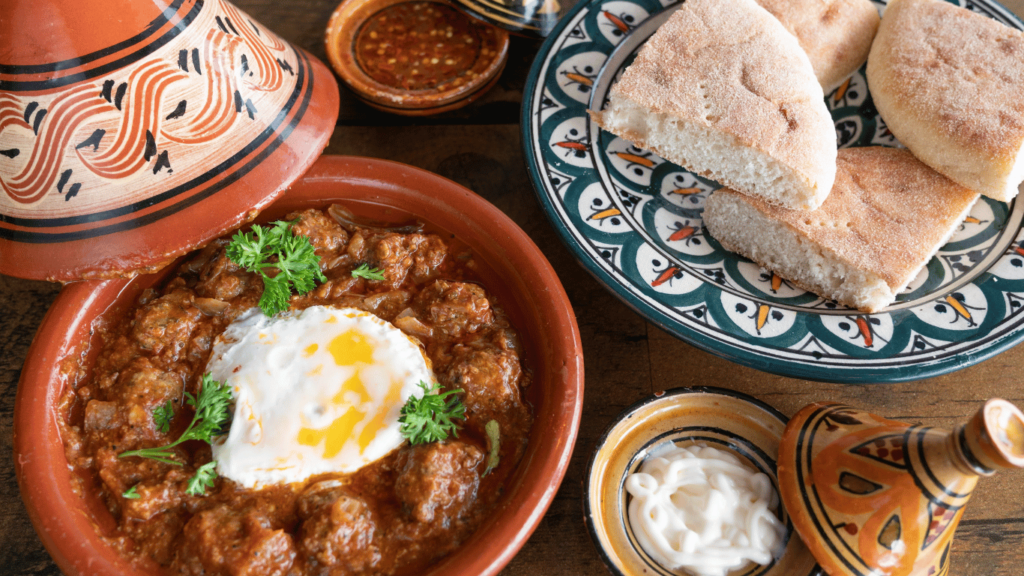
When you sit down at a wedding feast in Morocco, the delicious smells and rich colors of the dishes in front of you will tease your taste buds. During the three-day Desert Excursion, Moroccan cooking, known for its bold tastes and various components, showcases the nation’s culinary customs.
Moreover, at Morocco marriages, one of the numerous famous dishes served is tagine—a slow-boiled hash created with meat, vegetables, and a combination of scented spices. The meat can be anything from weakling to lamb to beef, and vegetables include onions, potatoes, and tomatoes. The species also used in tagine vary depending on the area but often contain paprika and saffron. Other typical dishes served at Morocco weddings include couscous and meat. The rich and varied menu at Moroccan weddings is a reason why they are known for their delectable food.

